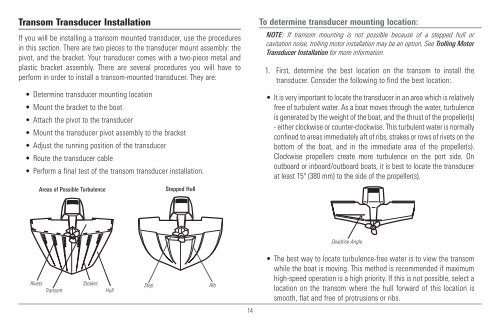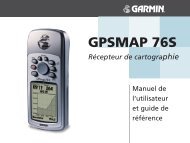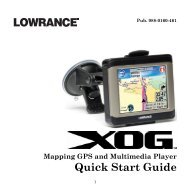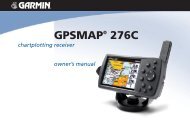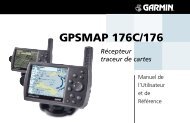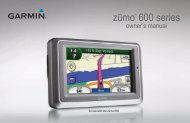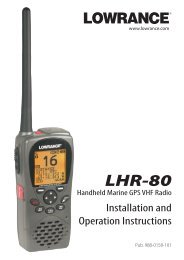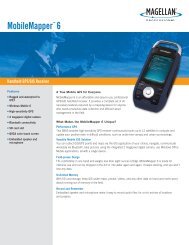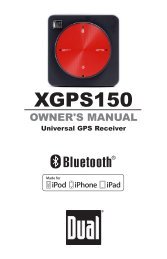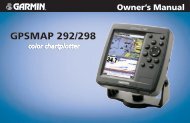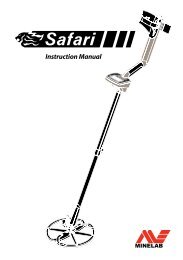Humminbird - Fish Finders and GPS
Humminbird - Fish Finders and GPS
Humminbird - Fish Finders and GPS
You also want an ePaper? Increase the reach of your titles
YUMPU automatically turns print PDFs into web optimized ePapers that Google loves.
Transom Transducer Installation<br />
If you will be installing a transom mounted transducer, use the procedures<br />
in this section. There are two pieces to the transducer mount assembly: the<br />
pivot, <strong>and</strong> the bracket. Your transducer comes with a two-piece metal <strong>and</strong><br />
plastic bracket assembly. There are several procedures you will have to<br />
perform in order to install a transom-mounted transducer. They are:<br />
• Determine transducer mounting location<br />
• Mount the bracket to the boat<br />
• Attach the pivot to the transducer<br />
• Mount the transducer pivot assembly to the bracket<br />
• Adjust the running position of the transducer<br />
• Route the transducer cable<br />
• Perform a final test of the transom transducer installation.<br />
Areas of Possible Turbulence<br />
Stepped Hull<br />
To determine transducer mounting location:<br />
NOTE: If transom mounting is not possible because of a stepped hull or<br />
cavitation noise, trolling motor installation may be an option. See Trolling Motor<br />
Transducer Installation for more information.<br />
1. First, determine the best location on the transom to install the<br />
transducer. Consider the following to find the best location:<br />
• It is very important to locate the transducer in an area which is relatively<br />
free of turbulent water. As a boat moves through the water, turbulence<br />
is generated by the weight of the boat, <strong>and</strong> the thrust of the propeller(s)<br />
- either clockwise or counter-clockwise. This turbulent water is normally<br />
confined to areas immediately aft of ribs, strakes or rows of rivets on the<br />
bottom of the boat, <strong>and</strong> in the immediate area of the propeller(s).<br />
Clockwise propellers create more turbulence on the port side. On<br />
outboard or inboard/outboard boats, it is best to locate the transducer<br />
at least 15" (380 mm) to the side of the propeller(s).<br />
Deadrise Angle<br />
Rivets<br />
Transom<br />
Strakes<br />
Hull<br />
Step<br />
Rib<br />
• The best way to locate turbulence-free water is to view the transom<br />
while the boat is moving. This method is recommended if maximum<br />
high-speed operation is a high priority. If this is not possible, select a<br />
location on the transom where the hull forward of this location is<br />
smooth, flat <strong>and</strong> free of protrusions or ribs.<br />
14


